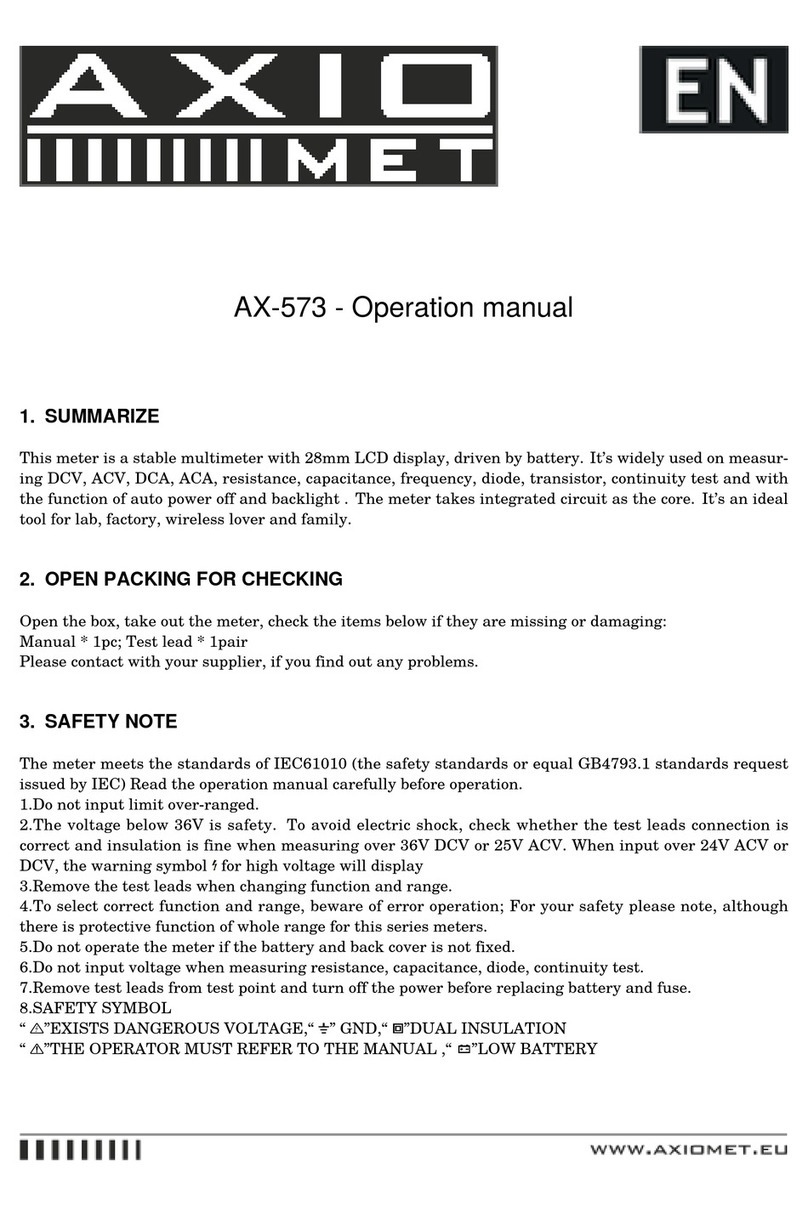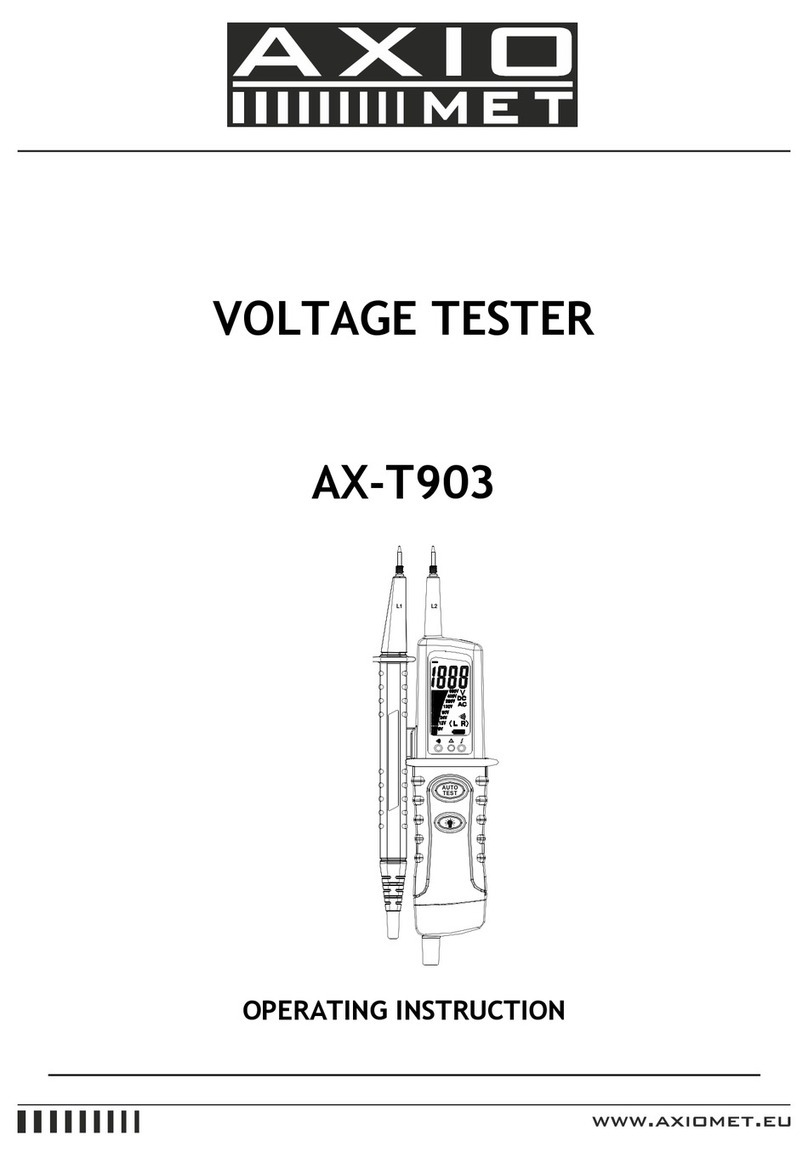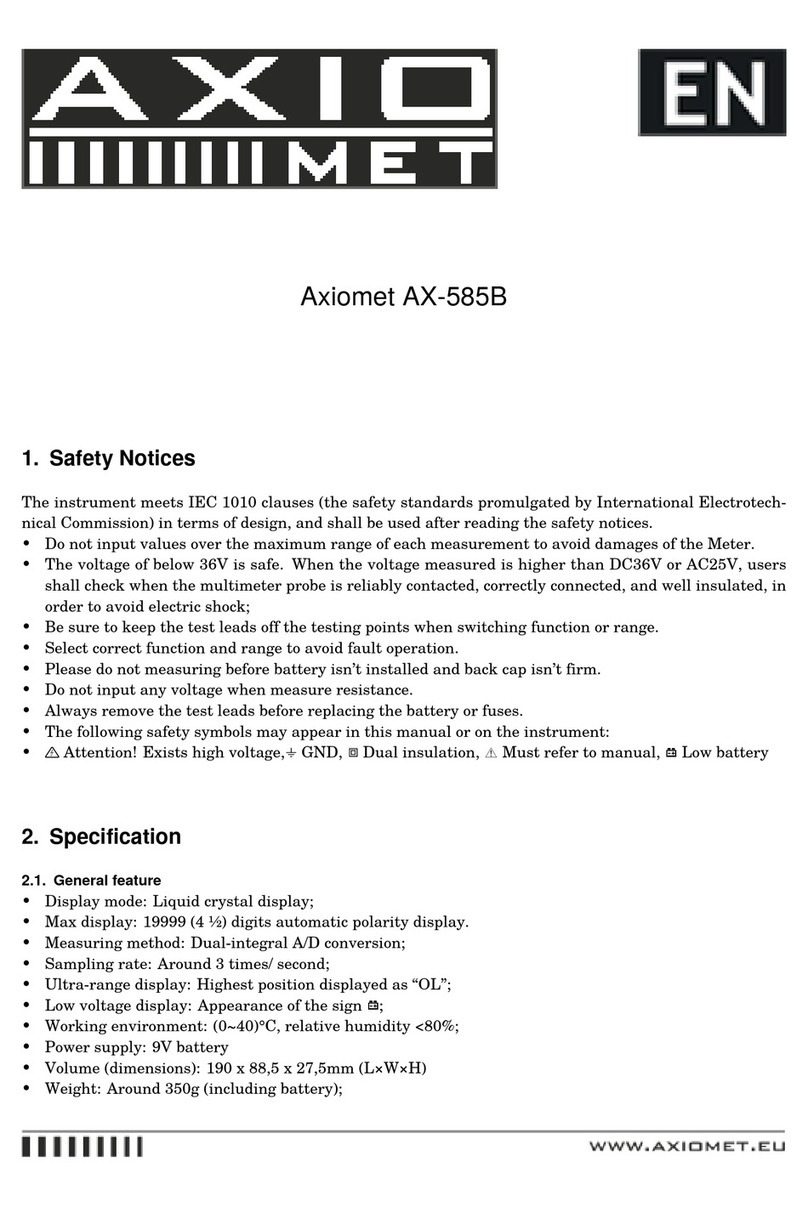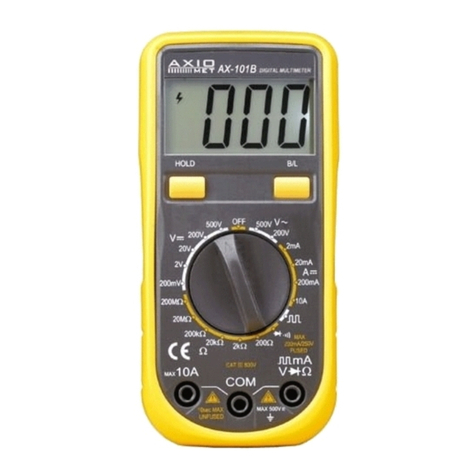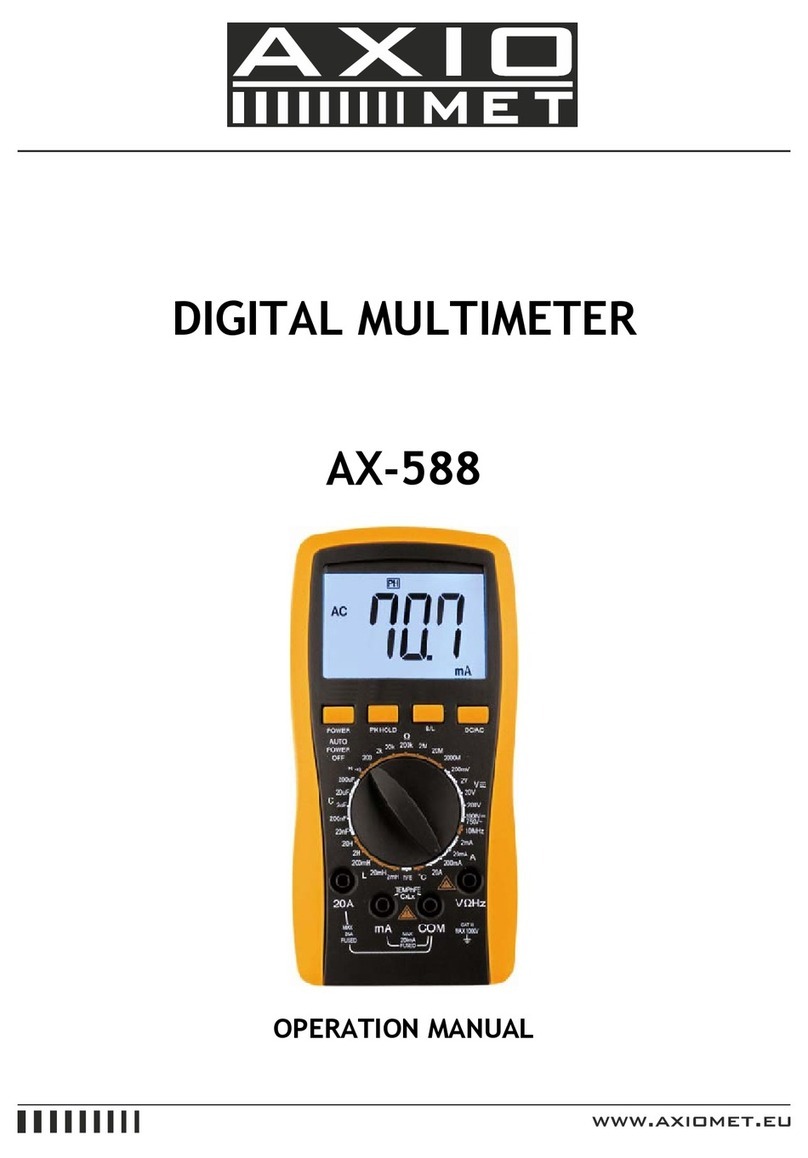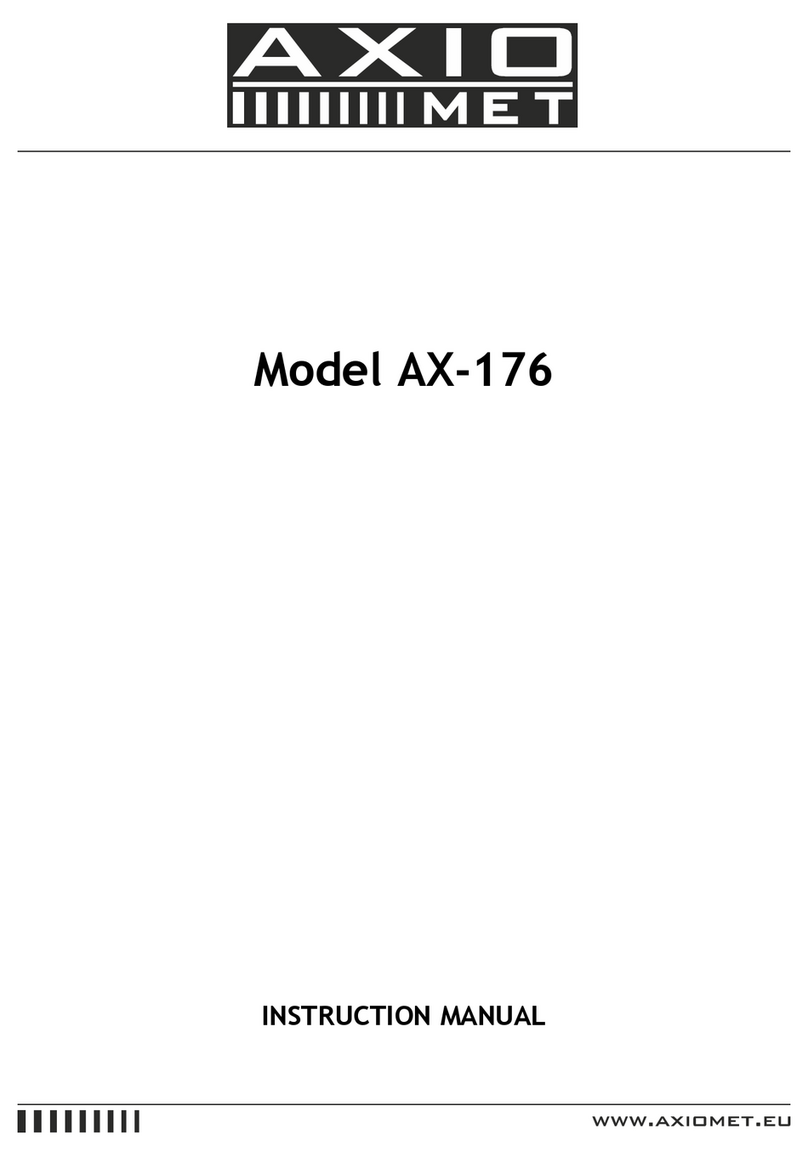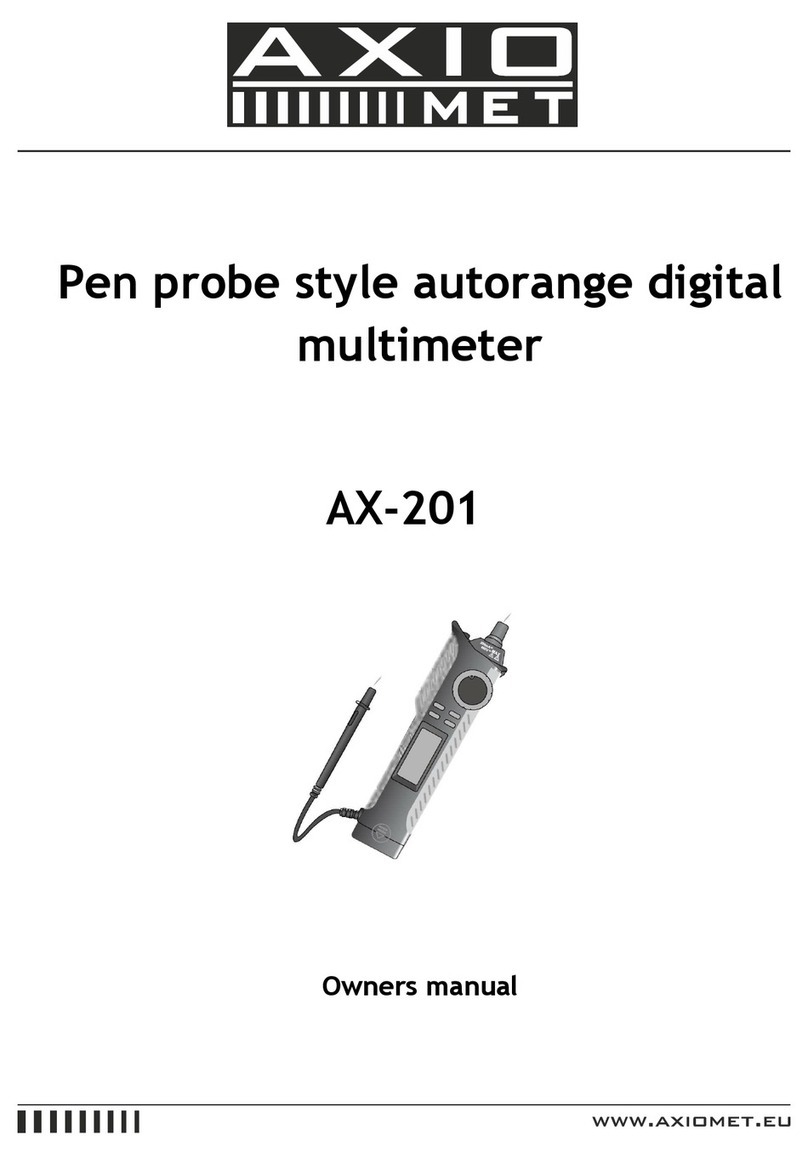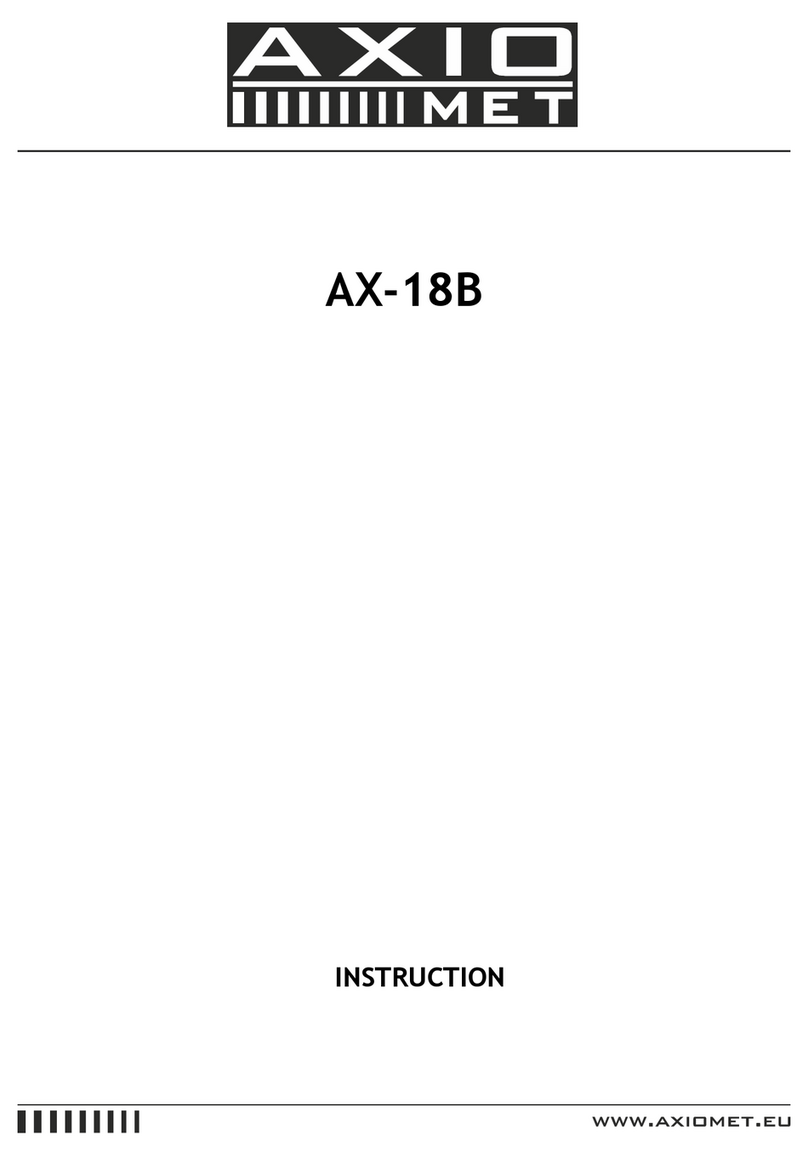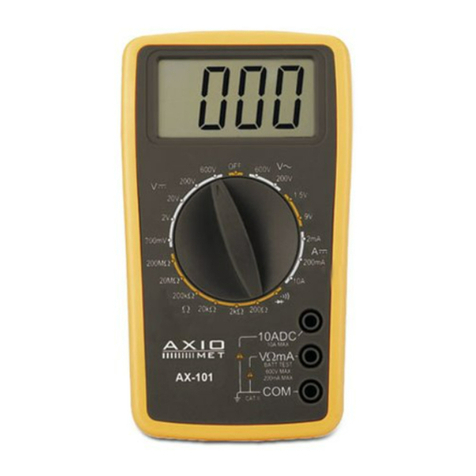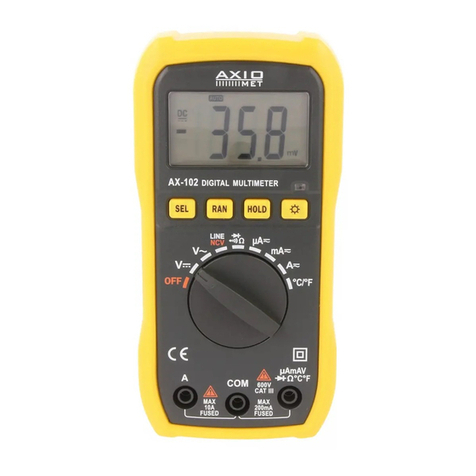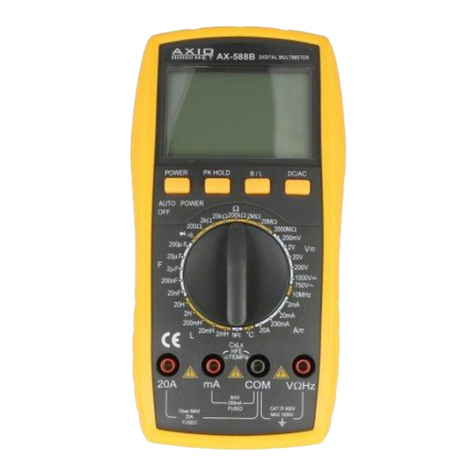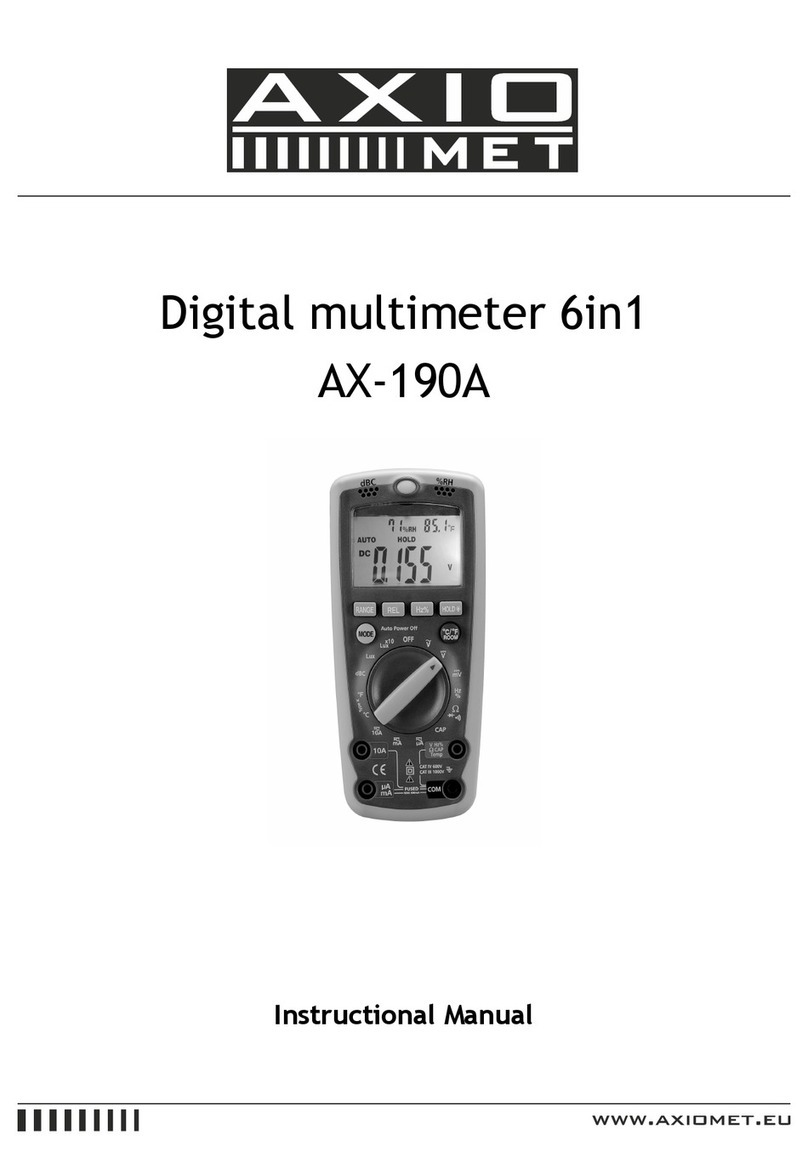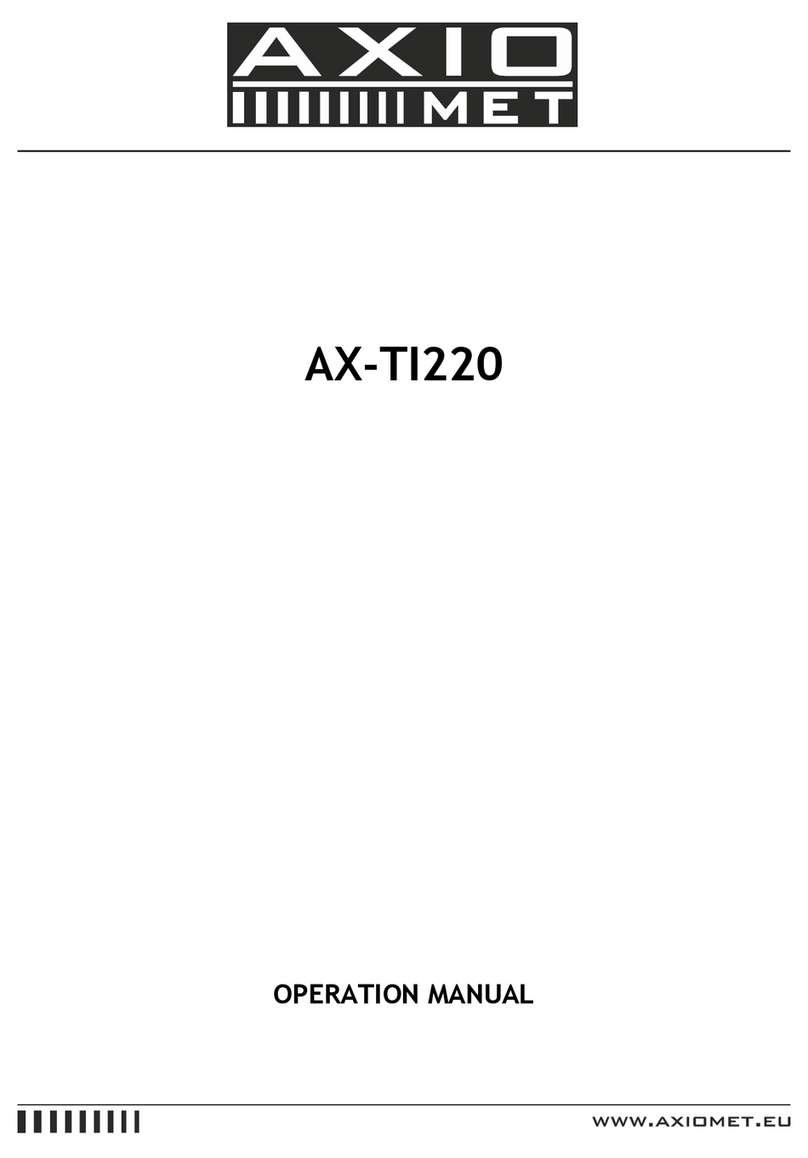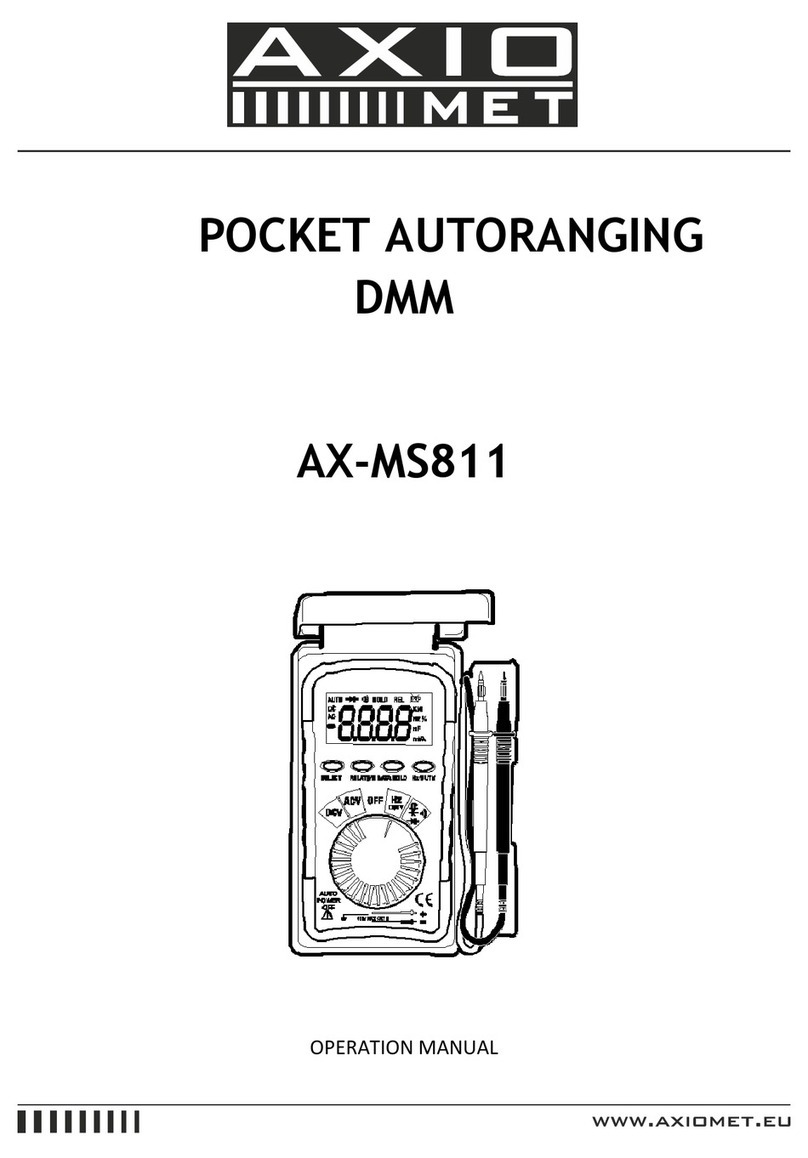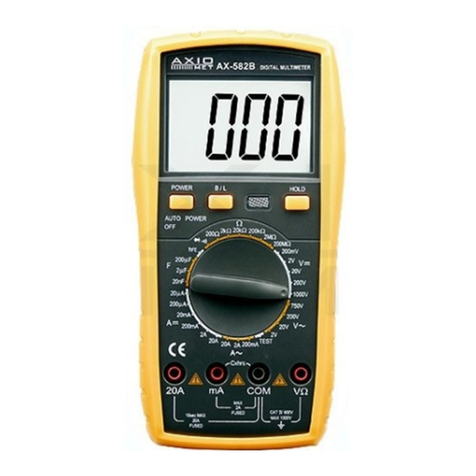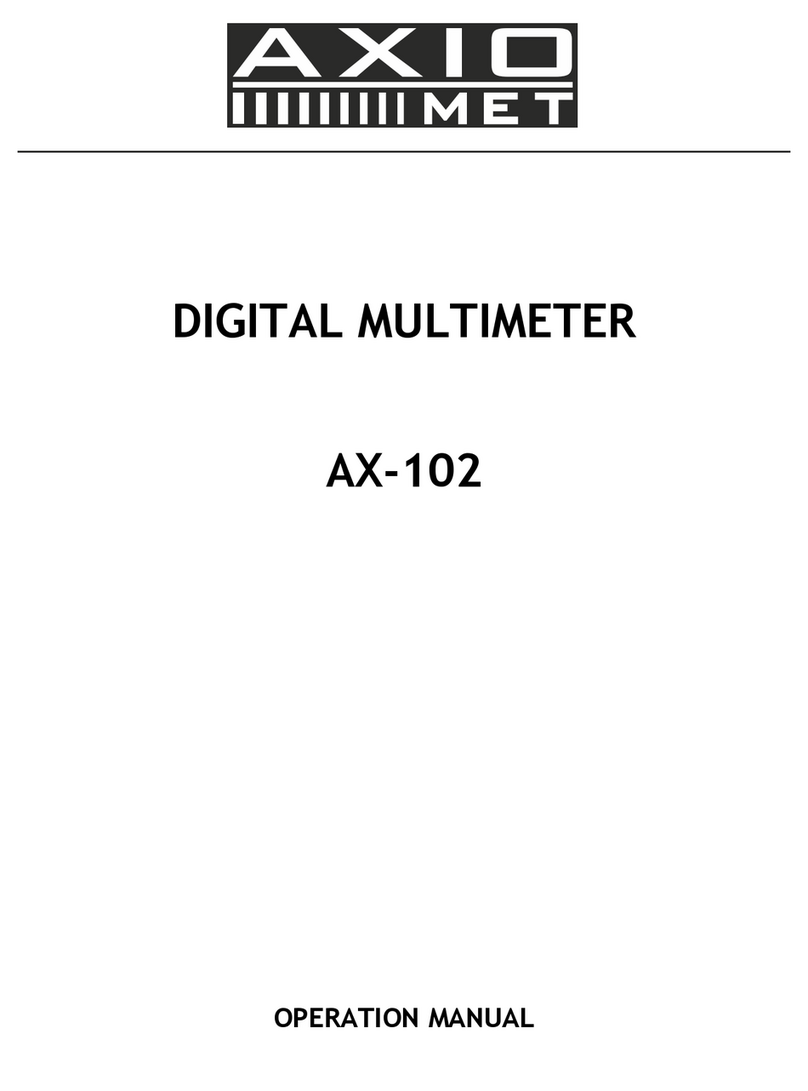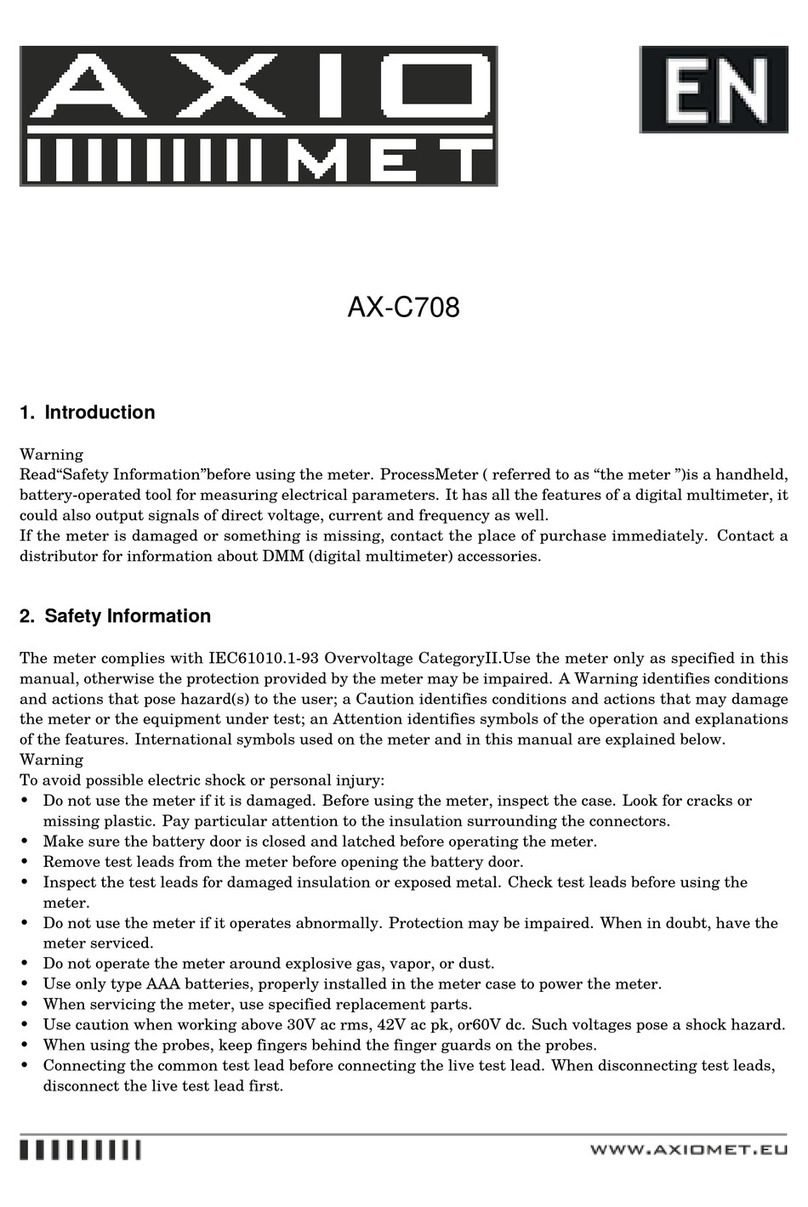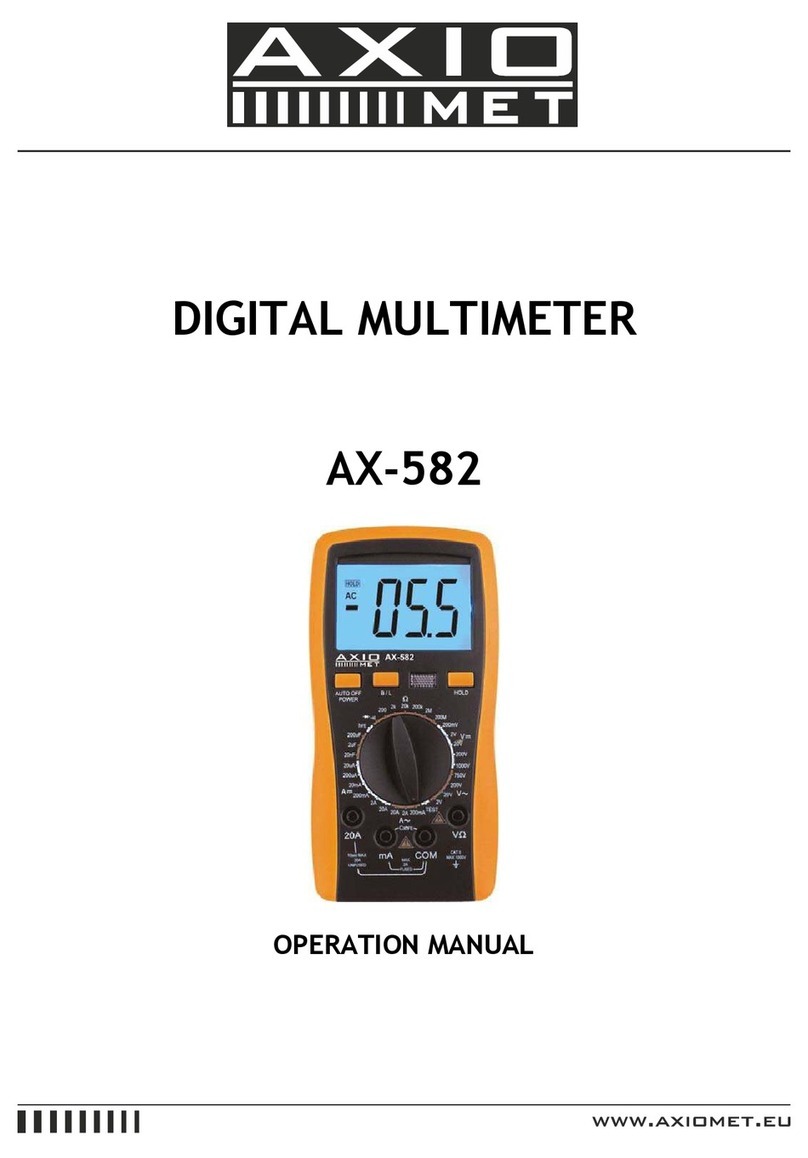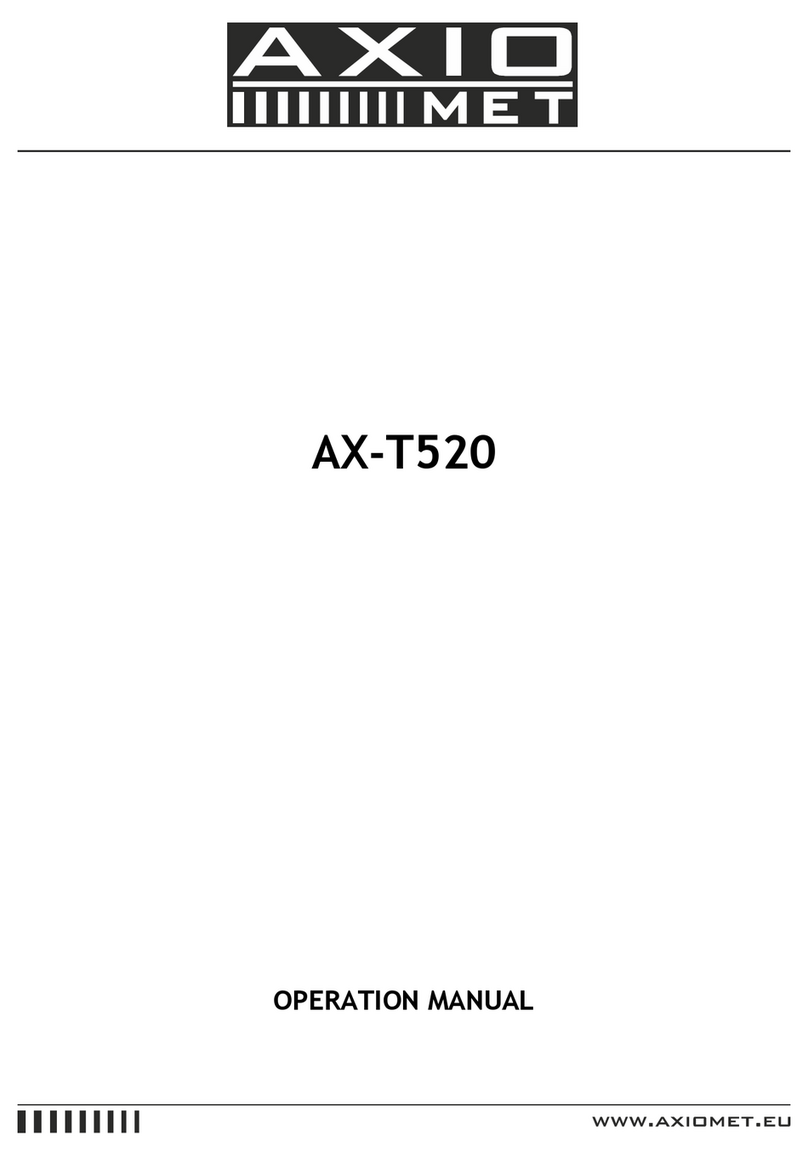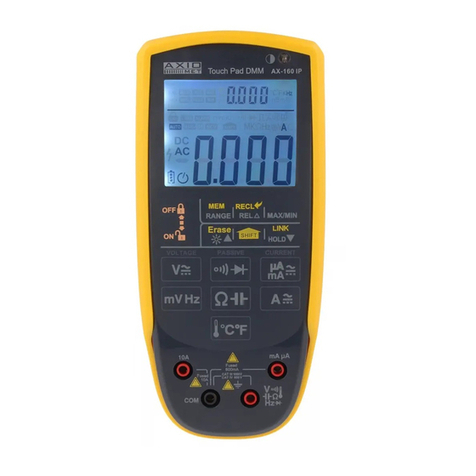
are required.
Set the function/range selector switch to the desired position. If the alue of the measured signal
is unknown, select the highest measurement range.
Touch test probes or press the corresponding button to make the measurement.
Watch the input signal alue.
O errange is indicated by the corresponding symbol displayed on the LCD.
When you see this symbol remo e the cause of the o errange. Select a higher range, or if
the highest range is already selected immediately stop the measurement. During resistance
measurement o errange means open circuit or too high resistance.
To replace the battery open the battery co er by unscrewing the screws or loosening the latch,
replace the battery, close the co er.
4.Precautions
Ne er exceed maximum input alues for all functions.
Do not apply oltage higher than the rated oltage, specified and marked on the unit between
terminals or between the terminal and the earth.
Use appropriate terminals, functions, and ranges for selected measurement.
Do not attempt current measurement if current alue exceeds the current rating of the fuse.
Before changing the measurement function, disconnect the test leads from the measurement
circuit.
Before measuring resistance, continuity, diodes or capacitance turn off the power and discharge
all high- oltage capacitors.
Do not use the de ice if it is damaged. Before using the de ice, inspect the housing. Check if it
has no cracks or broken off pieces. Carefully check the insulation surrounding the connectors.
Make sure the battery co er is closed and latched before operating the unit.
Do not use the de ice if it works incorrectly. Protection may be impaired. If you are unsure
whether the de ice is working correctly, take it to the ser ice.
When you make the electrical connections, first connect the black test lead before connecting the
red test lead, when disconnecting first disconnect the red test lead and then black test lead.
Use caution when working with oltages abo e 30 V AC rms, 42 V AC peak and 60 V DC. These
oltages can cause electric shock.
Before starting the measurements check if insulation of test leads and probes is not damaged and
there is no exposed metal.
Damaged test leads should be replaced by new one.
During measurement, always keep your fingers on the probes behind the hand guards.
Before opening the battery compartment co er remo e the test leads from the de ice, if it is
possible.
Replace the battery with a new one or charge the battery if the display shows the battery low
indicator.
When ser icing the unit, use only spare parts specified by the manufacturer.
Ne er use the de ice in explosi e en ironments, if it is not designed to work in such conditions.
Test leads and accessories should ha e the same safety categories as meter has.
